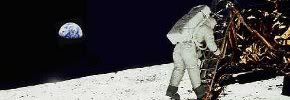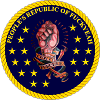CaptainChewbacca wrote:We havn't seen the last of Tulo. If you read the end of 'Eye of the Storm' you see that the Indowwy have gone back to him and asked for the assistance of the 'reformed' posleen to fight the Hedren war. I predict a few battleglobes will be joining the allies, as insane as that might sound.
We certainly haven't.
I got bored with Honor of the Clan so decided to skip a bit and read 'the Hero' which is actually really short, it only took a day. The story is set 1,000 years after the Posleen War, and features Tirdal san Rintal, one of the few Darhel to join the traditionally human-dominated military.
Before I get into the history and hardware I offer this disclaimer, John Ringo, after embracing this book has retroactively declared it non-cannon because the Darhel are alive as second-class citizens and this contradicts the epilogue to Watch on the Rhine, where a human fleet attacks a Darhel world and our heroes clearly want to kill off every man, woman and child. I do not consider these differences irreconcilable, it is possible that cooler heads prevailed or they found themselves unable to follow through on genocide when the Darhel surrendered. Anyway, Ringo disavows this book, make of it what you will.
After the humans overthrow the Darhel, they rechristen the Galactic Federation the Solar Systems Alliance (SSA) I'm not sure that anything signifigant changed besides the name and who was on top of the food chain, because the book has a very tight focus on a small group, and no scene takes place within the SSA.
Earth, and later Barwhon, were eventually cleared entirely of Posleen through the simple expedient of developing enough of a population to scour every. single. meter. of the surface. That's pretty impressive. I don't think we could do that now. We do know from the Cally books that Africa made a quick recovery as surviving zoos released their animals into the wild and lions found Posleen to their liking. The elephants also developed a habit of stepping on any Posleen eggs they could find, and bull rushing any Posleen they could see or scent.
Anyway, after all this, Earth went back to 'business as usual' meaning stringent enviromental protection and gun laws. And, because they are morons, tried to enforce the same on worlds where the Posleen are still very much a problem. This eventually led most of the Blight Worlds, unwilling to give up their god-given right to automatic antimatter weapons, to secede and form the Islendian Confederacy, the home to our heroes. This happened about 3-400 years before the story.
Anytime this history is brought up, the mentats are thanked for playing neutral peacekeepers throughout the revolution. They say that if the Islendians had access to GalTech (still vastly superior to human-made, even a millenia later) the SSA would have taken them seriously enough to start glassing planets. As it is, they never made it to that stage before the SSA decided preserving the union was more trouble than it was worth.
Incidently, the military and diplomatic genius who pulled off the revolution was named Parker Sunday.

What a small universe these people live in.
The SSA values the Confederacy (which is sometimes randomly referred to as the Republic for no discernable reason) as a buffer state between it and the Tular Posleen (yep, Tulo's group is going strong and have made amends, but relations still turn frosty sometimes) and whatever else is 'out there.' The Islendians meanwhile, don't have many other people to trade with, so they're not too upset with the SSA.
However, these rugged frontier types (Who Made Am-.... Islendia!) have noticed something odd about the people of Mother Earth. Over time, they're slowly becoming ever more insular, nonviolent, and philosophically inclined. This is probably the result of the Indowy programs to "civilize" humanity in the Cally books. What it means in the immediate sense is that they're no help at all in the present crisis, being increasingly uninterested in war as a concept, and in "regional conflicts" as a whole.
The Confederacy (that is sometimes a Republic) has a very limited number of ACS.
The new alien menace, the Tslek, are gray, amorphus blobs about the size of a small car. They get around on pseudopods, communicate telepathically, and no one has a clue how, or if, they see or otherwise sense their enviroment well-enough to navigate it. They have rough technical parity with the Confederacy/SSA, are equally intelligent about using the things they have, security and other things, and their hearts (assuming they have an equivalent) are incapable of any emotion save malevolence and the vindictive pleasure of seeing their enemies die horribly.
They are also invisible to the unit's tracking device, which sniffs out chemical traces, sweat, hormones and finds bits of DNA left here and there.
But the Blobs are just set pieces here. The DRT (uh, something recon team) unit that Tirdal is attached to infiltrates a bug-dominated world to sniff around and see if it could be a major staging ground for the Blobs. They do find an enemy stronghold, except that it's all a hologram and is really a single enemy in a hut. Spooked, the team records everything and bugs out, only to stumble upon the ruins of an Aldenata facility, with an artifact.
Tirdal recognizes the artifact as a lindai, a remote control for the mechanism that induces lintatai in Darhel, but says nothing. The captain figures an Aldenata artifact with a power source is worth a cool billion credits. Rather than settle for an 8-way split of a 10% finder's fee, Dagger (the team's sniper) murders the team to steal the device. Except Tirdal survives and gets it first.
The rest of the book is the inexperienced Tirdal, the sniper Dagger, and Ferret the other survivor who's determined to kill both of them, playing cat and mouse for a few days in the bug infested forest.



